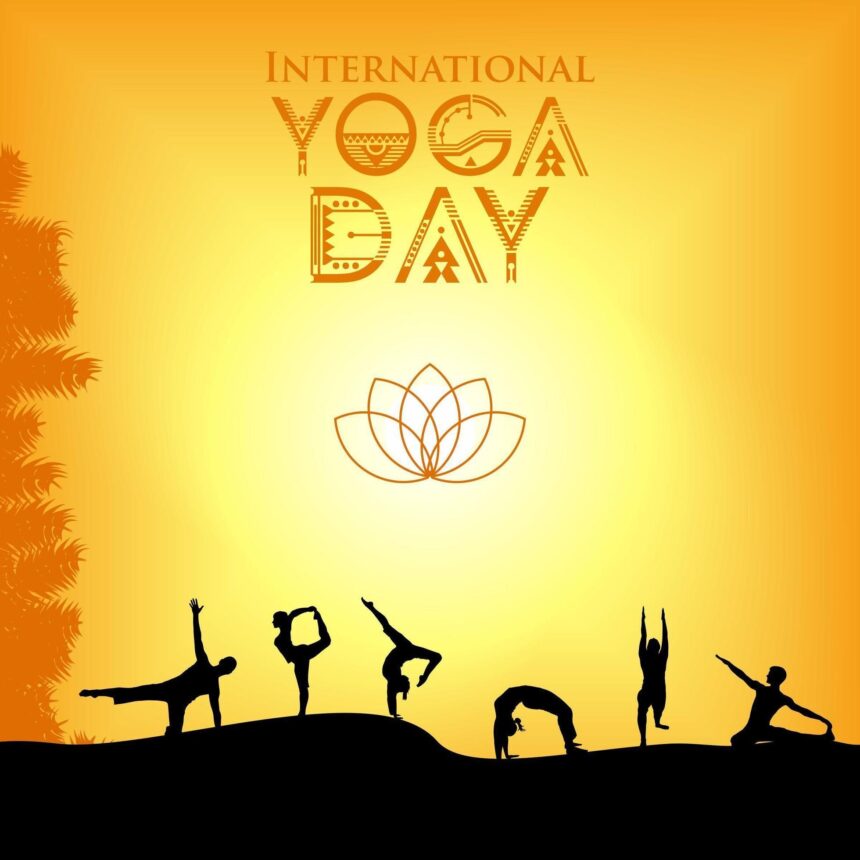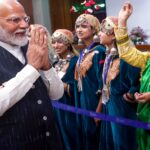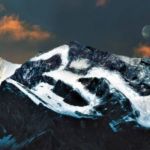June 21 is being celebrated as the International Yoga Day. Being a philosophy in its own right, Yoga should be understood as such. As the devotional aspect of Kashmir Shaivism, its very significance cannot be underestimated. In case of Kashmir Shaivism, Abhinavagupta elaborated its philosophical aspects while as Lalleshwari (Lal Ded) popularized its devotional side.
Abhinavagupta had been its main ideologue, philosopher and aesthetician. Abhinavagupta was born to a rich and noble Brahman family in Srinagar in 975 A.D. and died in 1025 A.D. His mother, Vimalā, died when he was still young and her death affected him greatly. The members of the family were devotees of Śiva. He matured in an atmosphere charged with religious devotion and dedication to learning. He began his studies with his learned father, Narasimha Gupta, but quickly began visiting teachers in Kashmir and elsewhere. While he was studying literature and poetry, he was overcome with an intoxicating devotion to Śiva. A study of Abhinava’s works enables us to trace the stages of his spiritual attainment. He worked successively on the three systems which are known, in Saiva Philosophical literature, as the Krama, Trika (embracing Pratyabhijna as one branch), and Kula.
In his works on recognition [Pratyabhijna], Abhinavagupta elaborates closely reasoned arguments to counter the Buddhists’ criticisms. He points the notion of Siva as the absolute consciousness and posits a reality that is totally free, completely unbounded and blissful in its intrinsic nature. This he says is the reality of consciousness, strengthened with power (śakti) of at least five different kinds: the powers of consciousness [Cit], bliss [Ananda], will [Ichcha], knowledge [Jnana] and action [Kriya]. It is this absolute consciousness surcharged with power that both dwell within all beings as their true nature and mutates to appear as the forms composing the manifest universe.
Abhinavagupta, very clearly, discloses the significance of the system of Pratyabhijna (Recognition). He “contends that it is because of doubt that the recognition of this omnipresent consciousness does not take place.” And his reasoning is (was) only meant to “remove [the] doubt. This precipitates the process of recognition of what is already the case, namely, that the self is in fact the powerful Lord, filled with śakti and creative of the visible universe.”
In his Trantaloka (Light on Trantas), Abhinvagupta takes pains to establish that the sole reality is Cit [Consciousness]. According to him, the cause of Samsara (rebirth) is non-knowledge, and knowledge is the sole cause of liberation. Non-knowledge is not want of knowledge which exists even in a clod of earth, but it has no rebirth. Non-knowledge is want of true [and] of perfect knowledge. It grows from the reflection in the limited soul, blurred by the six kancukas (cloaks or covers), viz Kala [Kalā], Niyati, Bala, Raga [Rāga], Avidya [Avidyā]. True knowledge is acquired by one whose animality has worn out, and who has attained the best consciousness.
Distinctive features of Abhinavagupta’s thought or of Kashmir Saivism are:
- Doctrine of the co-essentiality of the “triad” (trika) of the individual (anuor nara), cosmic power (śakti), and the ground of śakti, Śiva;
- The equation of the worship of the three goddesses in their Kālī–ground with liberating awareness of the unity in pure consciousness of (a) pre-cognitive impulse, cognition, and action, (b) object, medium, and agent of cognition, and (c) projection of, immersion in, and retraction of content in consciousness;
- The ascent through the three means of salvation: the ānava (through action, both ritual and yogic), the śakti(through the gradual intensification of a purely intellectual representation of reality toward its self-transcendence in non-discursive revelation), and the śāmbhava (self-realization unmediated by thought, in the inner vibrancy of the precognitive impulse);
- The hierarchy of seven levels of the contraction of the self, from the Śiva-mode to that of the individual; and
- The claim to catholicity: the third phase of the Trikaclaims to be the summation of and key to all Śaiva traditions, both “orthodox” (i.e., ŚaivaSiddhanta) and “heterodox” (i.e., the Bhairavatantras, Kaulism, and the Krama).
The Saivite thought that reached at the pinnacle of its development on Abhinavagupta found its public propagandist in the person of Lalleshwari, popularly known as Lall Dĕd (A.D.1335–1385).
This Śaivite lady, after early suffering due to her in-laws’ persecution, had to renounce her domestic life, thus becoming a wandering minstrel. Moving from village to village after leaving her home Lalla met Sidh Srinath, the Saivite Saint, and became his spiritual disciple. He initiated her into the Saivite Sect. Her thought and ideas then turned increasingly towards mysticism. She also began to practice Yoga and compose and recite verses in accord with her ideas. Yoga, be it noted “means the union of the individual soul and the universal. Like jnana, yoga leads to the goal of life.”
The Kashmirian Shaivites have greatly emphasized the importance of yoga. We are told: “The Kashmiri Shaivas, or the more serious of them, are not, and never have been satisfied with the subconscious realization of the stages in cosmic evolution leading up to that of the Supreme Universal Reality, Parama Shiva Himself, usually named simply Shiva. They have always endeavoured to reach direct conscious realization by a system of self-culture, mental, moral, spiritual and physical, known as Yoga (discipline, restraint), which it is claimed enables an individual Soul (purusha) to shake off the limitations hedging in the Ego (ahankara), in which it is temporally housed. It is claimed that a yogi, self-trained in this manner, can clearly and by direct experience realize all the stages in cosmic evolution up to the Supreme Himself.”
This self-culture, so to say, is meant to gain salvation: “To gain salvation the Yogi attempts to paralyze the intellectual functions of thought and wear down the moral functions by various ascetic exercises, termed the Eight Members (ashtanga). These eight exercises (anga, member) are (1) moral discipline in relation to others (yama); (2) moral discipline in relation to oneself (niyama); (3) suitable modes of sitting during meditation (asana); (4) regulation of breathing (pranayama); (5) retracting the sense-organs from objects of sense (pratyahara);(6) negative fixation of thougth by pinning it to an object (dharna); (7) meditation, positive fixation of Thought (dhyana); (8) perfect stillness of Thought (samadhi), in which all sense of individuality is extinguished. In the course of these the Yogi is held to win various miraculous powers (vibhuti) in addition to the light of intuition (pragyaloka, prajnaloka).”
Thus, after gaining self-discipline, through Yoga, Lalla became a yogini and taught: “Only when one had controlled one’s senses and obtained freedom from ‘desire, lust and pride’ could one attain the Supreme Bliss….”, the final stage in one’s spiritual evolution was the communion with God–the complete subjugation of one’s will, intellect and emotion to him.
Lalla still didn’t forget the philosophical side of her mystical experiences because she continued asking her guru: “goras pritxom sasi latay, yes hi kahn wanan tamis kiya naw; thousands of times did I ask my teacher, what to call Him Who has no name?” So, Yoga is more a philosophy than just an exercise or gymnastics!
(Author is Assistant Professor, Islamic Studies, GDC Sogam, Lolab. Feedback: [email protected])








